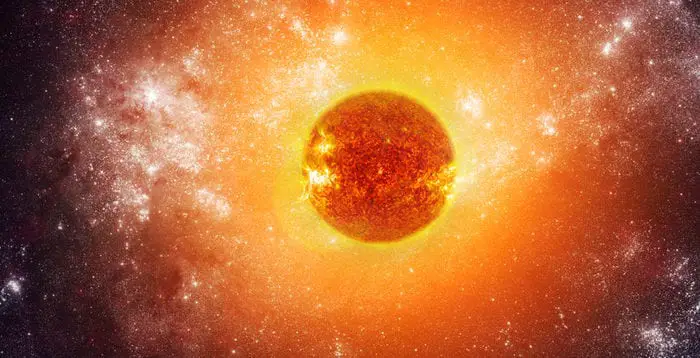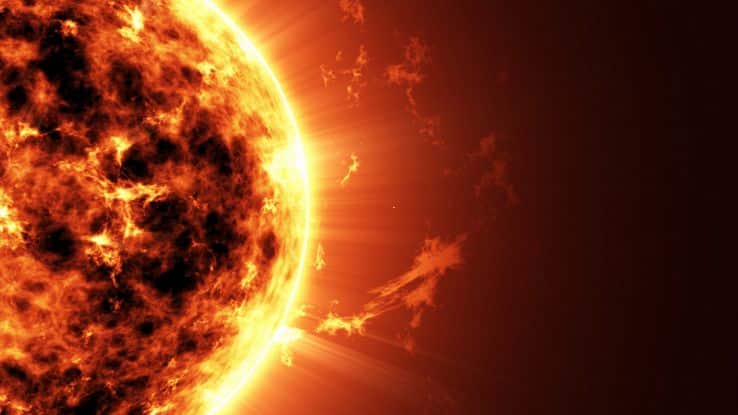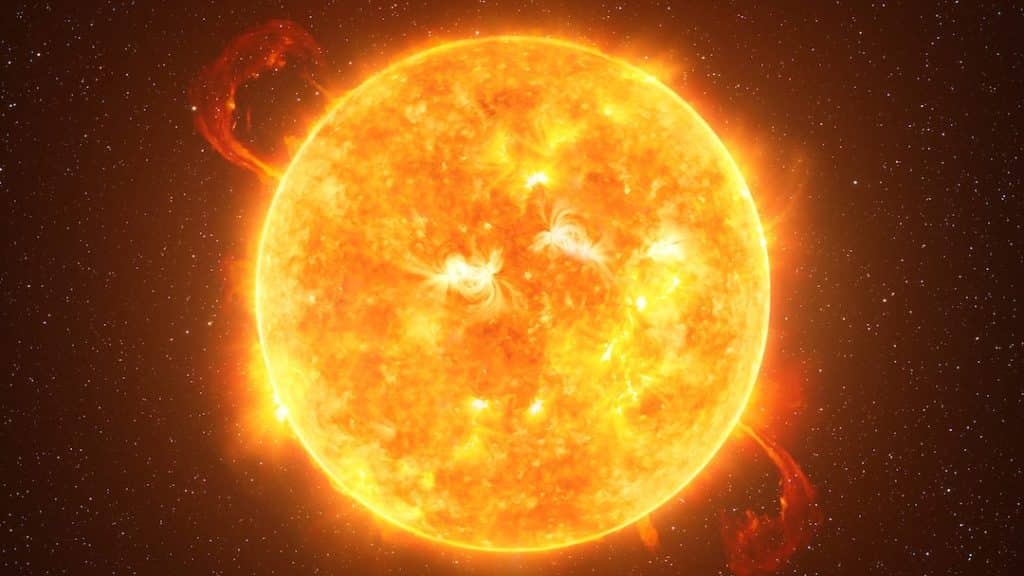For the first time, astronomers have observed in detail the movements of giant bubbles of gas on the surface of a nearby star, rising and falling like the inside of a lava lamp.
What Giant Gas Bubbles on the Surface of a Nearby Star Indicate
According to a team of astronomers from Chalmers University of Technology in Sweden, the enormous bubbles of hot gas are 75 times larger than the sun and appear to be sinking into the star more rapidly than expected.
The images show the surface of the star R. Doradus, a red giant star 180 light-years away in the constellation of Dorado. The star has a diameter about 350 times that of the Sun and serves as a preview of the future of our sun.
In about 5 billion years, our sun will become a red giant, swelling and expanding as it sheds layers of material and likely evaporates the solar system’s inner planets, though Earth’s fate remains unclear, according to NASA.
The observations, made using the Atacama Large Millimeter/submillimeter Array, or ALMA, telescopes in Chile, mark the first time researchers have traced such detailed motions on the surface of a star other than the Sun.
The researchers published their findings Wednesday in the journal Nature.
“We wanted to observe the gas in the atmosphere around the star and hoped to find signs of the ‘convection’ bubbles that were expected to exist,” lead author Wouter Vlemmings, a professor of astronomy and plasma physics at Chalmers, said in an email. “However, we did not expect to see them in such detail and actually be able to see their motion.”

Vlemmings and his colleagues study what happens to stars as they approach the end of their life cycle.
Stars produce energy in their cores through nuclear fusion, compressing hydrogen atoms to form helium. This process heats the star and powers it for billions of years.
Energy produced in the core can be transmitted to the star’s surface through enormous bubbles of hot gas, which then sink as they cool, similar to what happens in a lava lamp.
This process, known as convection, mixes elements created in the core like carbon and nitrogen throughout the star, according to the study authors. Convection is also the likely instigator of stellar winds, or fast-moving winds that can carry elements created by the star into space to help create new stars and planets.
When a star’s life ends, it runs out of hydrogen to convert to helium, causing the star’s core to collapse. This pressure on the core also increases the star’s temperature, causing it to swell and balloon into a red giant, according to NASA.
As stars approach the end of their lives, their outer layers peel off, and they eventually collapse or explode, releasing the elements they created within them into space.

“We are all made of ‘stardust,’ and much of the material around us is made of stars,” Vlemmings said. “It’s not yet completely clear how this material is expelled from old stars and incorporated into new stars and planets.”
The team chose to observe R. Doradus because it is one of the closest and largest red giant stars, making it easier to observe. The telescope allowed them to collect high-resolution images of the star’s surface over the course of a month.
“Convection creates the beautiful granular structure seen on the surface of our Sun, but it is difficult to see on other stars,” said study co-author Theo Khouri, a researcher at Chalmers, in a statement. “With ALMA, we have now been able to not only directly see the convective granules, which are 75 times the size of our Sun!, but also measure their speed of motion for the first time.”
The outermost layer of the sun, called the photosphere, is made of gas so hot that it bubbles. The sun’s photosphere is filled with millions of bubbles formed by convection. The gas bubbles, also known as convective granules, are about 621 miles (1,000 kilometers) across and move at speeds of a few kilometers per second, so they only survive for about 10 minutes.
But the convective cells on the surface of R. Doradus are more than 100 million kilometers (about 62 million miles) across, with velocities of a few tens of kilometers per second, and persist for about a month.

“We don’t yet know what causes this difference. It appears that convection changes as a star ages in ways we don’t yet understand,” Vlemmings said.
Although convection bubbles have been detected on the surfaces of stars before, the new observations have traced the movement of the bubbles in a way that was not possible before.
“It is spectacular that we can now directly image details on the surfaces of such distant stars and observe physics that until now have only been observable in our own Sun,” study co-author Behzad Bojnordi Arbab, a doctoral student at Chalmers, said in a statement.
The new study includes longer observations than previous ones, which have captured the evolution of the bubbles, said Dr. Claudia Paladini, an associate astronomer at the European Southern Observatory in Chile. Paladini is the author of a study looking at bubbles on the surface of the star pi1 Gruis. Although she was not involved in the new research, she is the author of an accompanying paper in Nature.
“You can see the bubbles rising, expanding and disappearing like in the Sun. That’s remarkable considering the distance we’re talking about,” Paladini said. “Now we just need to observe many more of these stars!”
#Giant #Bubbles #Surface #Nearby #Star #Foreshadow #Fate #Sun